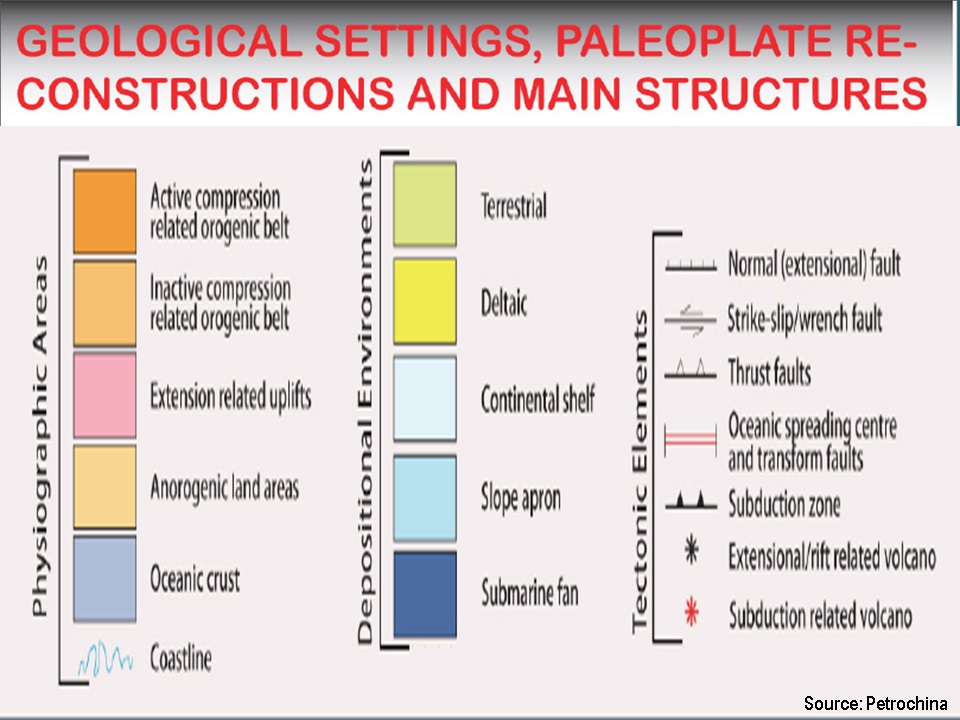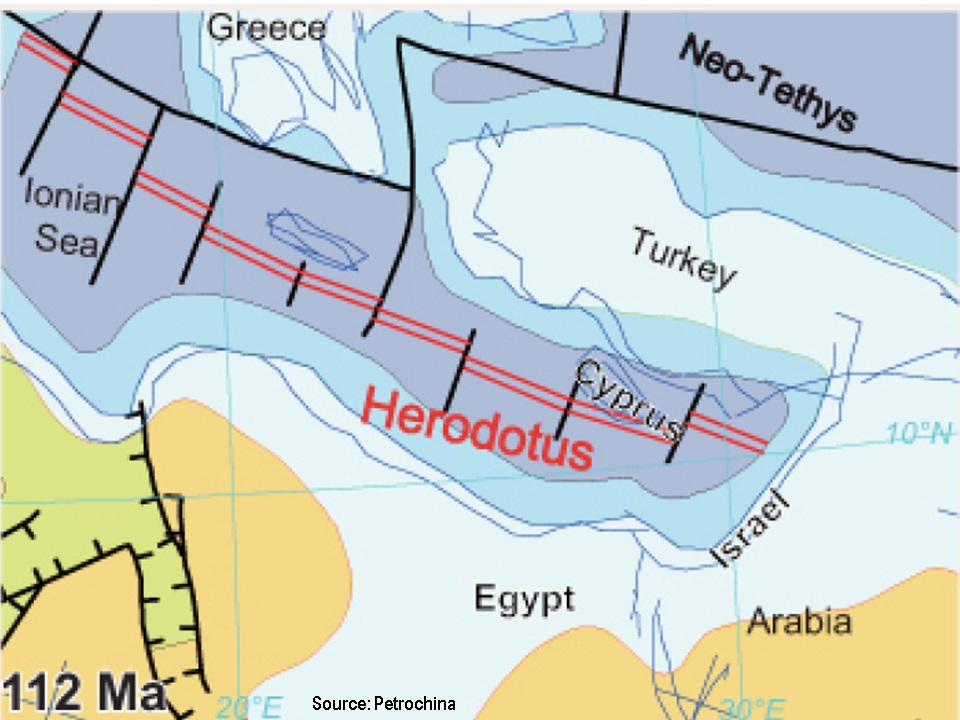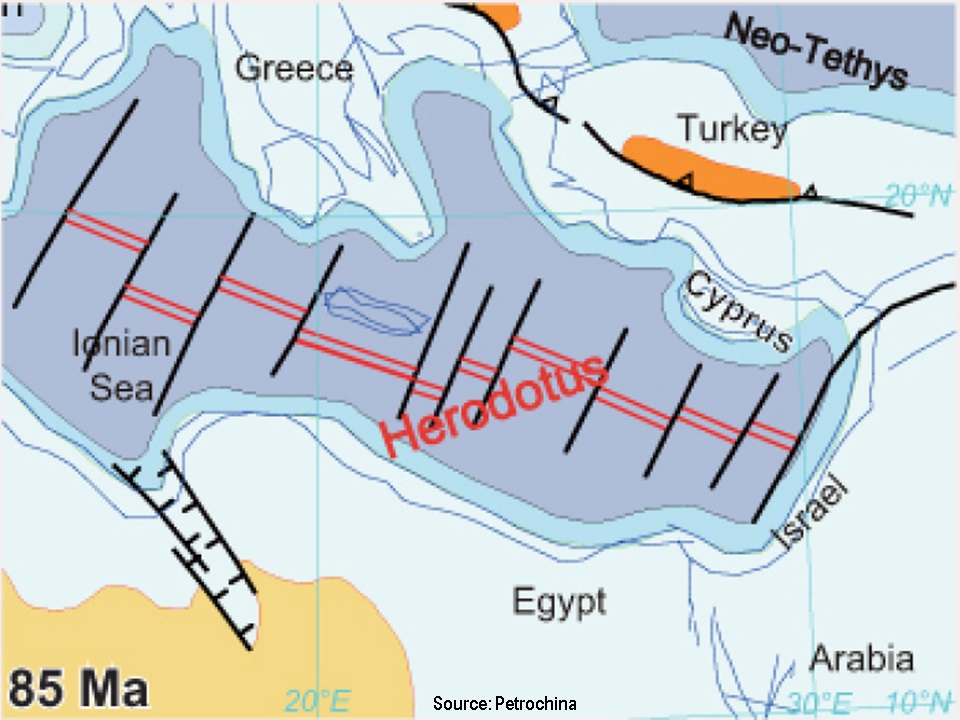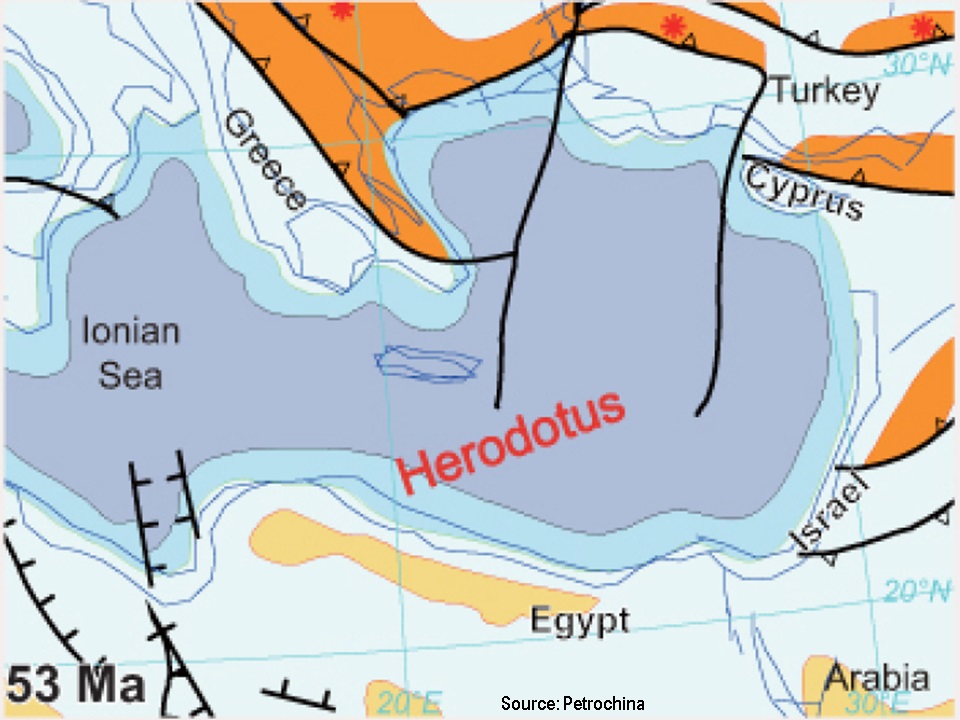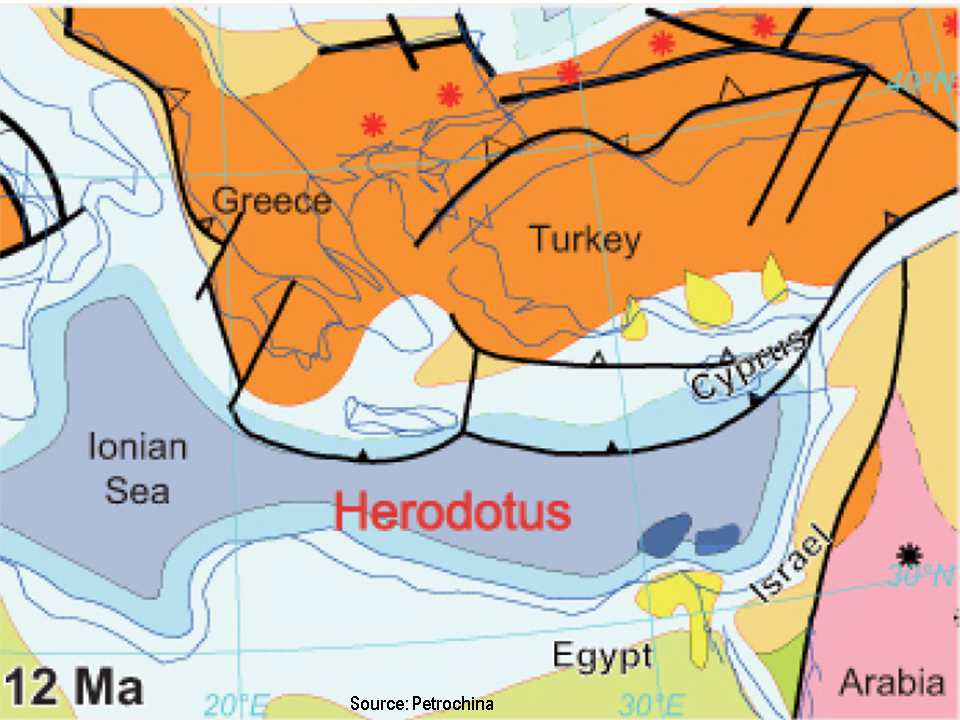21083 - The value of the Herodotus Basin according to PETROCHINA
N. Lygeros
Translated from the Greek by Athena Kehagias
We must all unite and make an effort to highlight the mineral wealth of the Greek EEZ, which is for granted and it provides ample opportunities for economic recovery, a fact which already has been realized and officially declared by most European, Americans, Australians, Russians and most recently the Chinese experts.
We only recently became aware, that one of the biggest companies in the world, the Chinese State company Petrochina, proceeded in 2014 with the presentation of a large field of the Greek EEZ in the Herodotus Basin, at the AAPG International Conference in Houston, USA.
According to our opinion, this unique presentation is along the line with some of our previous publications, given the fact that it described the underwater sediment depositions in a paleogeographic fashion, to take place in a consecutive intertemporal mode, in prospective hydrocarbon resource basins, located for at least one hundred consecutive million years between the South-West Peloponnese, West of Crete, the Gulf of Sirte in Libya, South of Crete, the Nile Delta in Egypt, west of Israel and Lebanon and South of Cyprus.
The Petrochina presentation entitled “Hydrocarbon Potential in the Herodotus Basin, Eastern Mediterranean” states that, the basins which are located in the southern part of the Mediterranean, the geological clay formations of the Mesozoic period up until the Cenozoic period, the Sandstones of the Oligocene and Miocene period, and further on, the Miocene salts, played the role of parent hydrocarbons rocks, of hydrocarbon reservoir rocks, and of structure shield waterproof rocks .
Petrochina considers, that there are reasonable chances for significant hydrocarbon reserves to exist in the basins of the Mediterranean, south of Crete.
Also the palaeogeographic developments of the basins of the Southern Mediterranean Sea’s wider region, present significant similarities in the tectonic and stromatographic manner of geological structure formation, while in the area there seems to be three different types of hydrocarbon deposits.
The presence of mud volcanos South of Crete, indicates that these, historically played a key role as power sources of the discovered or the expected to be discovered reserves.

